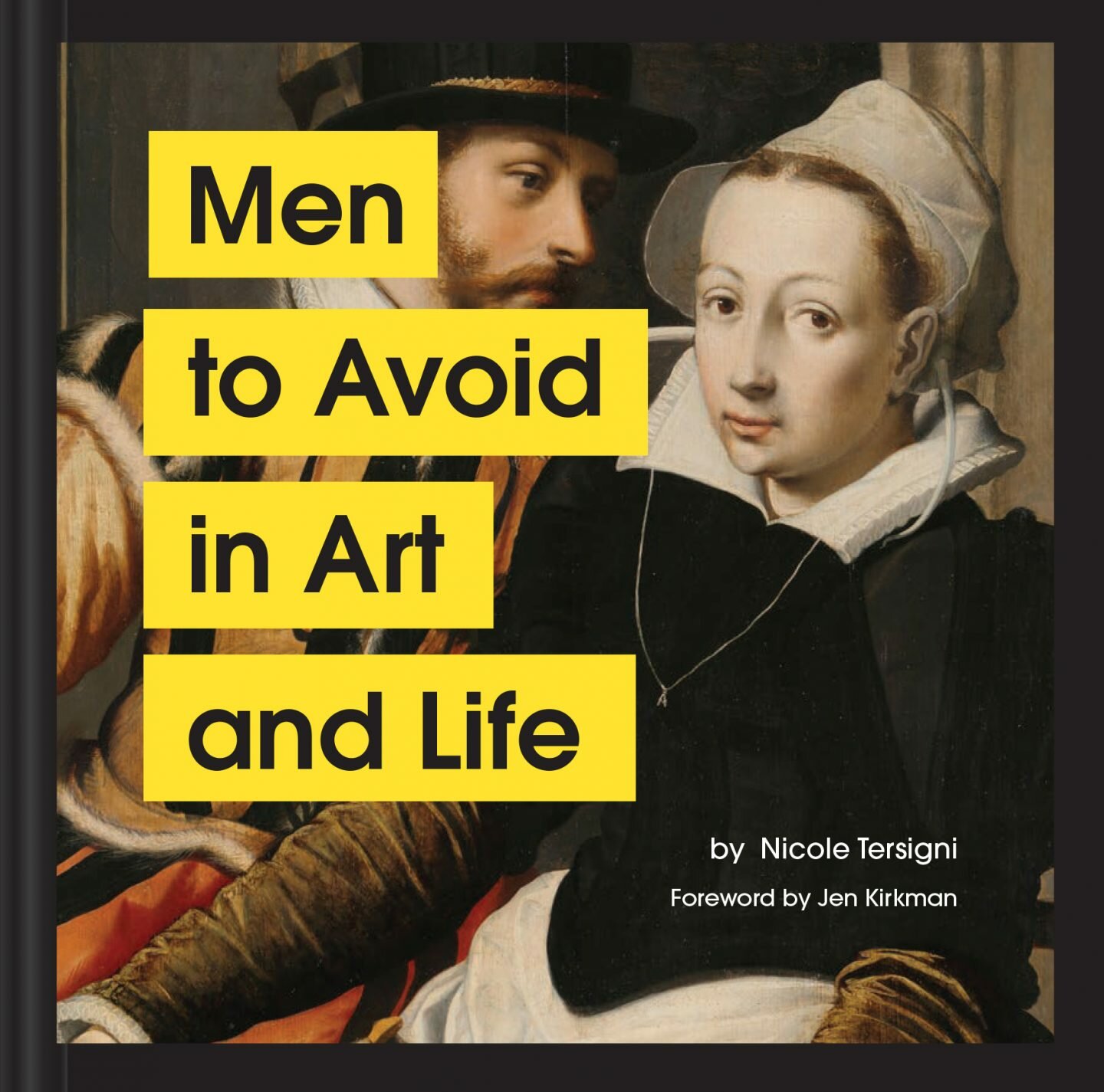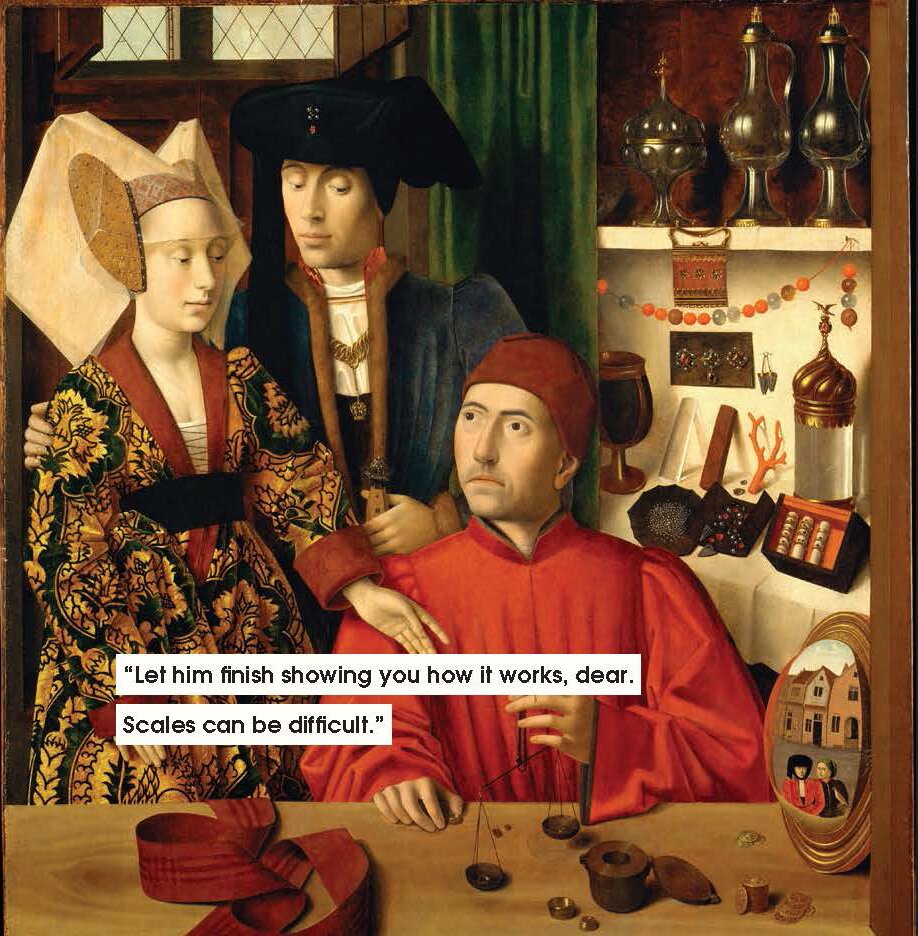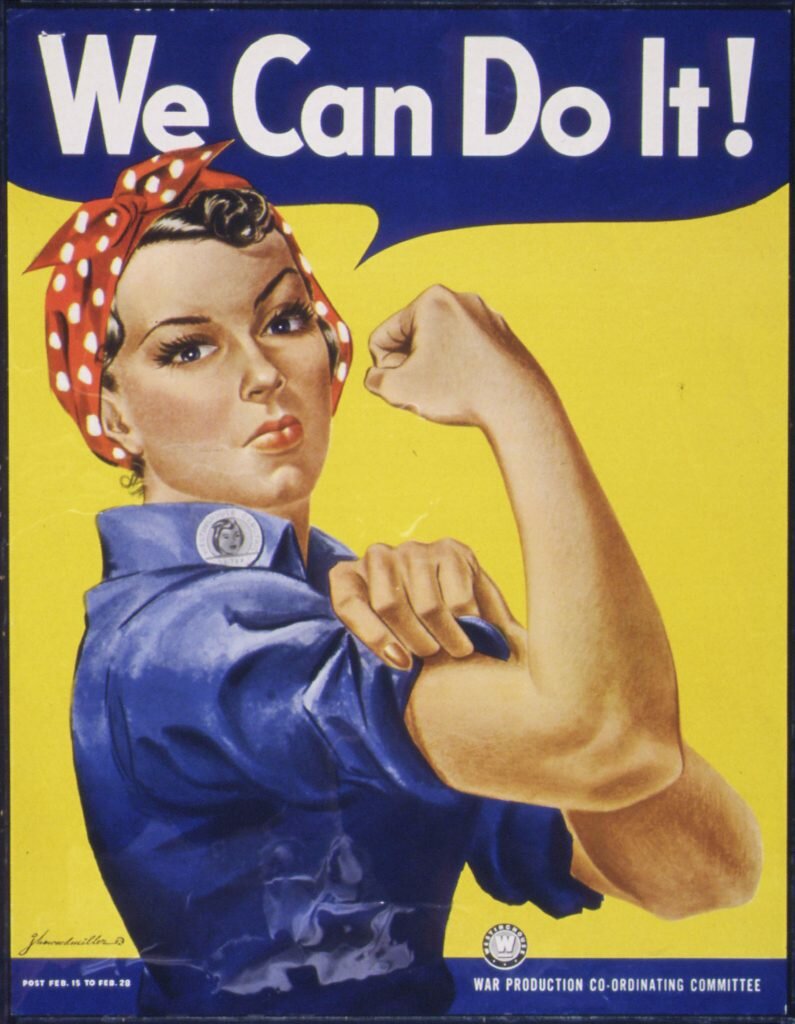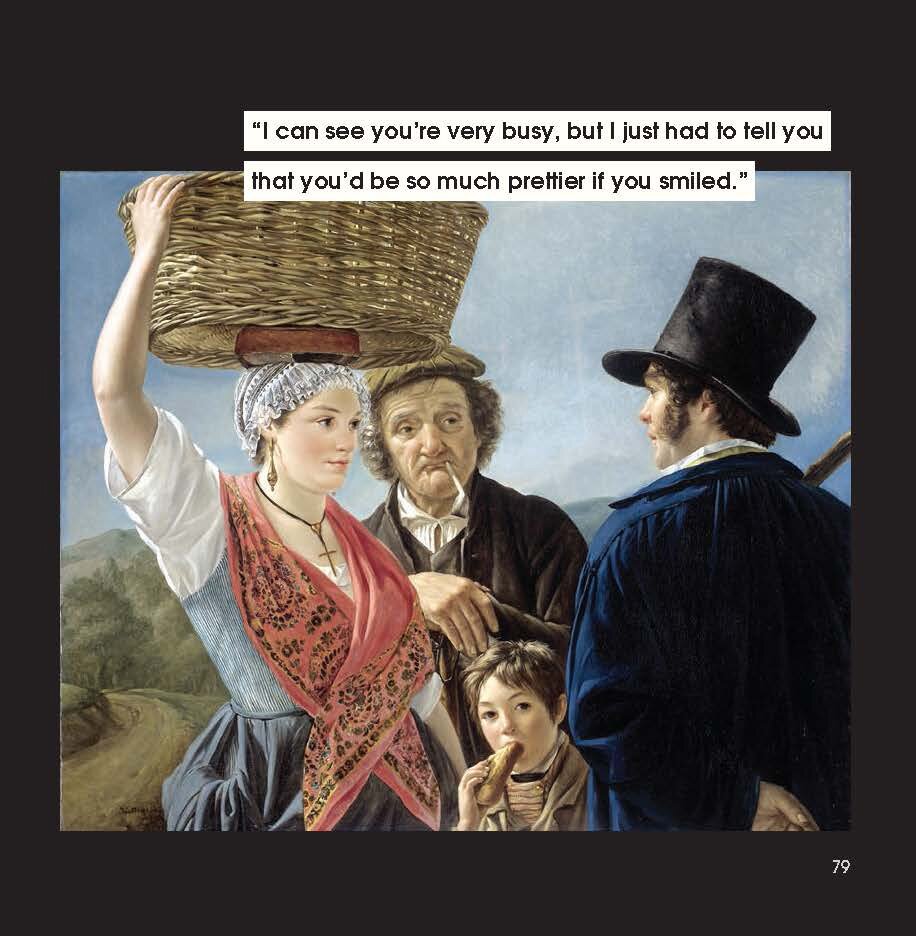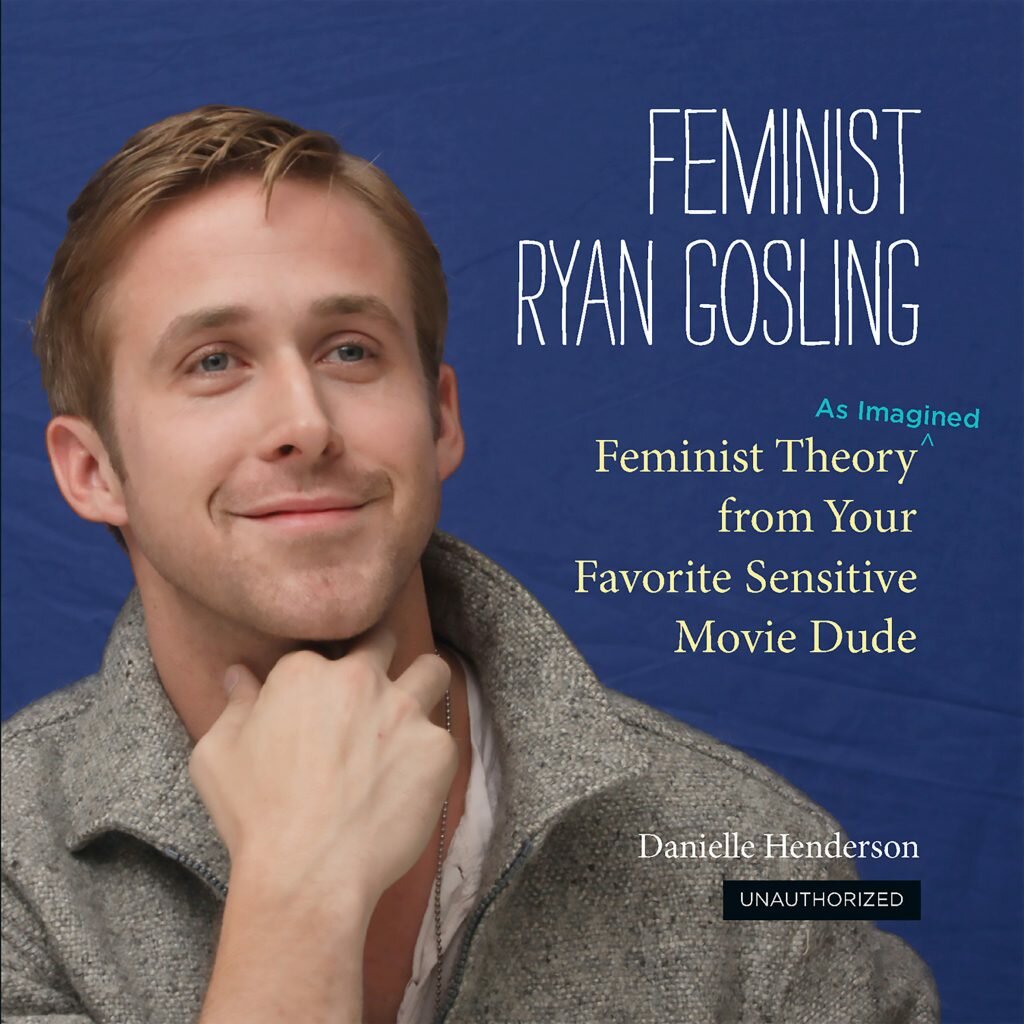In the beginning was a tweet. When Nicole Tersigni was thumbing through Twitter last May, she encountered a man explaining a woman’s joke back to her — typical mansplaining that, unfortunately, was nothing the comedy writer hadn’t experienced herself. Except this time, instead of getting mad or frustrated, she got funny. To express what it felt like to be a woman online, she first ran a search for “woman surrounded by men” on Google Images, stumbling upon a 17th-century oil by German painter Jobst Harrich that depicts a clutch of old men crowding around a woman with a single breast exposed. “The humour of her standing in the middle of them all, holding her bare breast, was impossible to scroll past,” she tells me.
Tersigni’s own wit would then hone that humour into a fine point. “Maybe, if I take my tit out,” she captioned the image on Twitter, “they will stop explaining my own joke back to me.” It was razor-sharp satire, cracking commentary on women’s lived experience and, of course, starting a damn good meme.
She continued pairing these classic works of art with classic examples of mansplaining in a Twitter thread that hit upwards of 20,000 retweets. Turns out, the classical canon is not short on images of women surrounded — nay, overwhelmed — by men. And surprisingly, or not, women today can still relate.
“The deadpan expressions and ‘I’m so over it’ faces on these women from hundreds of years ago can still be seen on women in photos today,” says Tersigni.
Her memes have been compiled and published as Men To Avoid in Art and Life, a book that further categorises exasperating male behaviour into chapters such as The Concern Troll, The Sexpert and The Patronizer. Here, in our author’s hands, what’s irksome in a woman’s everyday life is effectively alleviated with cutting drollery. And what might be dense feminist reasoning is, in the medium of the meme, transformed into relatable and accessible content.
Matter of fact, feminism and memes have been fellow conspirators long before the first tweet. After all, the meme, being an easily transmitted symbol, form and bearer of ideas, is pretty unshakable when it comes to communication. Evolutionary biologist Richard Dawkins, who invented the term in his 1976 volume The Selfish Gene, called it “the cultural equivalent of a gene”. Want to spread the word, disperse or disrupt ideas, or champion a cause? A meme’s ready to do the work.
Recall Rosie the Riveter. You’ve seen her: a woman in a polka-dotted bandana and blue work shirt, flexing an arm and asserting, “We Can Do It!” Originally created in 1943 as a piece of wartime propaganda to encourage more American women to join the labour force, Rosie has had enduring impact as a commanding feminist icon (though, shrug emoji, real-life Rosies were likely ushered off factory floors once men returned from the frontlines). Today, she persists in recreations and remixes as a tribute to working women, and a monument to female independence and empowerment.
And you bet Internet culture has had a hand in that. Ah yes, the Internet that’s not always been kind to women; the same Internet that coined the meme “There are no girls on the Internet” in its early days, and that’s often ready to shut down female perspectives with mansplaining or Feminist Nazi name-calling. Of course, women
have carved out spaces online (see Jezebel or Tumblr) but the Internet isn’t so huge that it doesn’t contain trolls. As Shannon Edwards, creator of the now-defunct Sensual Memes Instagram account, recalled to W Magazine: “I’ve tried getting my point across in a confrontational way and alternately in a passive way. But neither seem to work.” And so: “I use memes as buffers.”
Creating a powerful Internet meme that speaks to feminism, however, involves more than cropping an image and slapping on a caption in large Impact font that reads “BOSS BITCH”. Instead, great memes are clever and downright crafty in deploying Internet speak and codes to signify and convey feminist values. They don’t lecture or patronise; they engage. “Memes can be such a great way to get a message out there,” as Tersigni tells me. “They’re easy to consume, they’re funny and people really respond to them.”
Take the Hawkeye Initiative, which launched on Tumblr in 2012 to critique sexist portrayals of female superheroes in comic books, where the likes of Black Widow and Wonder Woman are often drawn in physically impossible and provocative poses. The fix? Replacing these contorted women with Hawkeye, a male superhero, striking a similar pose. Per the Hawkeye Test: “If your female character can be replaced by Hawkeye in the same pose without looking silly or stupid, then it’s acceptable and probably non-sexist.”
This marriage of satire and sincerity forms the cornerstone of potent feminist memes — they amuse, while powering a message that’s blatantly femme-friendly. Observe Feminist Taylor Swift, a Twitter account that rewrites the pop singer’s lyrics for patriarchy-knocking purposes (“I don’t know about you / But I’m feeling 22 / cents underpaid on the dollar”), or Male Tears, an irony- laden meme wielded against male privilege.
Then again, are Internet memes really the best vehicle for the feminist message? Might they be too glib and frivolous to carry the weight of feminist theory? Well, let’s not forget how generations of girls and women were radicalised by such handy media as zines, slogans and television shows, which have long served as gateways to complex ideas. This is how, as political theorist Eileen Hunt Botting points out in an essay for Yale Books, “memes can play an important role in the education of people about challenging, rapidly changing and often abstruse ideas about gender, sex and sexuality”.
Ultimately, too, memes are made for virality — they spread fast, wide, and relentlessly beyond anyone’s control. That makes them an effective channel for dissemination that’s explosive in ways that might be good or evil. Memes could help elect a misogynist into office or they could conjure a sea of pink pussy hats at a women’s march. These gifs, jpgs and Tumblr accounts have untold real-world impact.
Which brings us to the mother of all feminist memes: Feminist Ryan Gosling. Begun in 2011, it played on the existing, wildly popular meme known as Hey Girl, which paired images of Gosling with flirty, boyfriend- type pronouncements like, “Hey girl, let’s cuddle and watch Disney movies.” Danielle Henderson, then a gender studies graduate student, gave these come-ons a decidedly feminist slant — “Hey girl, it’s hard for me to reify Beauvoir’s theory of the lost female genius when I’m around you.” — and lo, a meme was made.
To be clear, Gosling never claimed to be a feminist (or your boyfriend), but it didn’t stop the meme from going mad viral, culminating in the 2012 book Feminist Ryan Gosling. It’s even been the subject of a 2015 academic study at the University of Saskatchewan in Canada, which found that men in a sample group were more likely to endorse feminist statements when they’re paired with a picture of the actor. According to Henderson: “I had greatly underestimated the appeal of Ryan Gosling’s face.” Indeed, as a meme to an end, the feminist message could do worse.
This story first appeared in the November 2020 issue of A Magazine.
